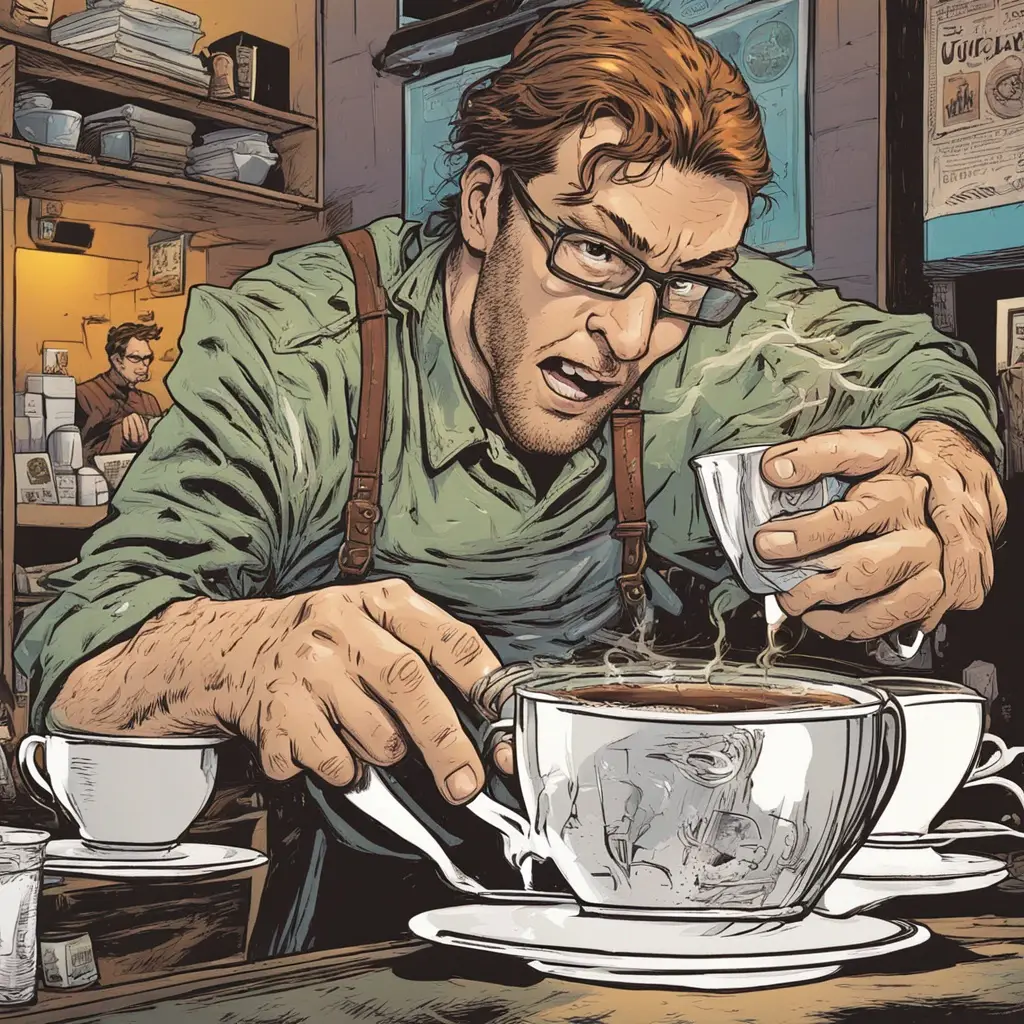Ah, coffee – that magical elixir that transforms “morning me” from a grumbling gremlin into a functioning human. There’s something almost ritualistic about brewing a perfect cup. This process demands skill, a sprinkle of love, and a dash of patience. But fear not, dear coffee novices! This guide will demystify the art of coffee making, turning you from a caffeine caterpillar into a brewing butterfly.
The Holy Grail of Beans
First things first: the coffee beans. Imagine them as the characters of your favorite sitcom – diverse, full of personality, and the key to the whole show. Beans can be light, medium, or dark roast, each bringing unique flavor and aroma. Think of light roast as the witty character, vibrant and full of zesty notes; medium roast as the well-rounded friend, balanced with sweet and acidic touches; and dark roast as the mysterious one, bold and intense. Experiment to find the cast of beans that suits your taste buds best.
The Grinding Saga
Next up, grinding. If the beans are the characters, the grinder is the scriptwriter, shaping the story. The grind size affects the extraction process – too fine, and you might end up with a bitter taste; too coarse, and your coffee could be underwhelming. Aim for a consistency that’s somewhere in the realm of sea salt for a standard drip coffee maker, finer for espresso, and coarser for a French press. Freshness is key, so grind your beans just before brewing to capture their full essence.
The Water Chronicles
Water, the unsung hero of the coffee world, plays a crucial role. It’s the medium through which the coffee flavors are extracted, so its quality cannot be understated. Use filtered water if you can, as it will ensure a cleaner, purer taste, unmarred by the various minerals and impurities that can lurk in tap water. The temperature of the water should be just right – around 195°F to 205°F. Too hot, and you risk burning your precious beans; too cold, and you won’t extract the entire symphony of flavors.
The Brewing Odyssey
Now, for the main event – brewing. There’s a plethora of methods out there, from the French press to the AeroPress, from drip coffee makers to the pour-over. Each has its fans and its unique charm.
- The French Press: A classic, forgiving for beginners. It allows the coffee to steep in boiling water, then uses a plunger to separate the grounds. The result? A robust, full-bodied coffee.
- The Pour-Over: For those who love the ritual and the control. It involves pouring hot water over coffee grounds in a filter. The water then flows through the coffee and filter into a carafe or mug. This method highlights the coffee’s complex flavors.
- The AeroPress: A relative newcomer but a versatile and beloved option. It’s a bit like a syringe that uses air pressure to push hot water through coffee grounds directly into your cup. The result is a smooth, rich coffee with less bitterness.
- The Drip Coffee Maker: The reliable workhorse is perfect for those who value convenience. Just add water and coffee and let the machine do its thing.
Experiment with different methods to find your perfect match. It’s like dating but with coffee makers.
The Art of Measurement
Precision is your friend in the quest for the perfect cup. A general rule of thumb is to use about 1 to 2 tablespoons of coffee grounds for every 6 ounces of water, but feel free to tweak this ratio to suit your taste. Invest in a scale for accuracy; your taste buds will thank you.
The Final Touch
Finally, remember to enjoy the process. Brewing coffee is not just about the end product but the journey. The sound of grinding beans, the aroma of fresh coffee blooming, and the first sip of your meticulously crafted brew are the moments to savor.
Troubleshooting Tips
- Bitter Coffee? Your grind might be too fine, or you need to be more over-extracting. Try coarsening the grind or reducing the brewing time.
- Weak Coffee? The opposite problem – your grind might be too coarse, or you need to extract more. Fine-tune the grind or extend the brew time.
- Sour Coffee? The water temperature might be too low, or the coffee needs to be brewing longer. Make sure your water is hot enough, and adjust your brewing time.
Remember, perfection in coffee brewing is a moving target, influenced by personal taste, the type of beans, and even the weather. The key is to experiment and enjoy the ride.
So there you have it, a beginner’s guide to unlocking the secrets of brewing the perfect cup of coffee at home. As you embark on this caffeinated journey, remember that every cup is an opportunity to refine your craft, explore the vast and varied world of coffee, and share in a tradition that spans centuries and cultures.
So, take a deep breath (inhale that glorious coffee aroma while you’re at it), and dive into the world of home coffee brewing. Remember, every coffee master was once a beginner. Mistakes are just part of the process, stepping stones to that perfect cup. Embrace the adventure, tweak the variables, and enjoy the ritual. Before you know it, you’ll be brewing cups that delight your senses, warm your soul, and make those early mornings easier to embrace.
Welcome to the wonderful world of coffee. Your perfect cup awaits.



